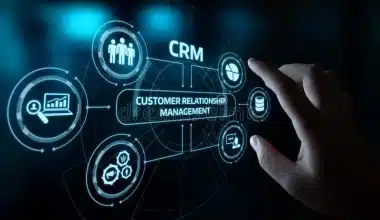As a small business or startup, it can be a daunting task to find the right employees to join your team. Hiring employees is a critical process that requires careful planning, preparation, and consideration. It is important to be aware of the legal requirements and best practices to ensure a successful hiring process. This guide will provide an overview of how to hire employees for small businesses and startups, including the 5 stages of the hiring process, the best way to hire employees, and the legal requirements for hiring employees.
Introduction
Hiring employees is an important step for any small business or startup. It can be a challenging and time-consuming process, but it is essential for the success of your business. Finding the right employees is the key to the success of any business. It is important to take the time to properly assess the skills and qualifications of potential employees to ensure that they are the best fit for your company and its goals.
The process of hiring employees for a small business or startup can be broken down into 5 stages: research and planning, job posting and recruitment, screening, interviewing, and onboarding. Each stage of the hiring process is critical for finding the right employees for your business. It is important to understand each stage of the hiring process and to be aware of the legal requirements and best practices when it comes to hiring employees.
What are the 5 Stages of the Hiring Process?
The hiring process can be broken down into 5 stages: research and planning, job posting and recruitment, screening, interviewing, and onboarding.
Stage #1. Research and Planning.
This involves researching and understanding the job role and the skills and qualifications required for the position. It also involves creating a job description and outlining the duties and responsibilities expected of the employee.
Stage #2. Job Posting and Recruitment.
This involves creating an effective job posting to attract qualified candidates. It also involves using various recruitment methods to attract the right candidates.
Stage #3. Screening.
This involves reviewing resumes and conducting background checks on potential candidates to ensure that they are a good fit for the position.
Stage #4. Interviewing.
This involves holding multiple rounds of interviews with potential candidates to assess their skills and qualifications.
Stage #5. Onboarding.
This involves orienting the new employee to the company, providing training, and setting clear expectations.
What is the Best Way to Hire Employees for Small Businesses & Startups?
The best way to hire employees for small businesses and startups is to use a combination of recruitment methods. This includes using job boards, social media, and referrals as well as attending job fairs, networking events, and job clubs. It is also important to create an effective job posting that outlines the skills and qualifications required for the position as well as the duties and responsibilities expected of the employee.
Another important aspect of the hiring process is screening potential candidates. This involves conducting background checks and reviewing resumes to ensure that they are a good fit for the position.
Finally, it is important to hold multiple rounds of interviews with potential candidates to assess their skills and qualifications. This can help to ensure that you find the right employee for the job.
What Are the Legal Requirements for Hiring Employees?
It is important to be aware of the legal requirements for hiring employees. This includes understanding and complying with federal, state, and local laws.
At the federal level, employers must comply with the Fair Labor Standards Act (FLSA) and the Immigration and Nationality Act (INA). The FLSA sets standards for minimum wage, overtime pay, recordkeeping, and other labor standards. The INA sets standards for hiring foreign workers.
At the state level, employers must comply with state laws related to minimum wage, overtime pay, and labor standards. In California, employers must also comply with the California Fair Employment and Housing Act (FEHA).
At the local level, employers must comply with local laws related to minimum wage, overtime pay, and labor standards.
What 3 Things Do Employers Consider When Hiring?
When hiring employees, employers consider 3 things: skills and qualifications, experience, and personality.
#1. Skills and Qualifications
Skills and qualifications are important factors when hiring employees. Employers look for candidates who have the necessary skills and qualifications to perform the job. This includes knowledge, education, and experience.
#2. Experience
Experience is also an important factor when hiring employees. Employers look for candidates with relevant experience in the field and industry.
#3. Personality
Employers consider personality when hiring employees. Employers look for candidates who have the right attitude and fit for the job and company culture.
What is the Golden Rule of Hiring?
The golden rule of hiring is to hire the best candidate for the job. This means hiring the person who is the best fit for the position based on their skills, qualifications, experience, and personality. It is important to take the time to properly assess each candidate and choose the one who is the best fit for the job.
How To Hire Remote Employees
Hiring remote workers has become more prevalent for organizations in the aftermath of the COVID-19 outbreak, but it comes with its own set of issues. You’ll need to make a few changes when guiding remote prospects through the hiring process.
Here are some methods to make the process more engaging for remote hires:
#1. Prepare the employee for their first day.
When it comes to technology, make sure their employee credentials and logins are in order and that they have all of the necessary equipment before the first day.
#2. Greet them enthusiastically.
This may appear simple, but it may go a long way. Make a video introduction with the new hire’s team to make them feel at ease. Remember that they are entering your firm at a very different point than previous employees. Even if you can’t be in the same physical spot, make them feel welcome.
#3. Make yourself available.
It’s easy to pretend you’re available while failing to follow through in practice. Your new hire will almost certainly have questions. If they can’t stroll into your office or lean over to question their peers, they must feel at ease communicating via remote communication means. If you’re onboarding new hires remotely, it’s critical to overcommunicate information and make oneself approachable and open to queries.
Because the new employee will not have handouts or tangible paperwork, it is critical to provide a complete and clear online guide.
Onboarding Your New Employee
The following are the five most critical parts of onboarding:
- Give an orientation. It may be remote, but a general review of the organization is essential for every new hire to hear.
- Describe your organization’s basic principles and expectations. This is always essential when embarking on a journey with a new hire. The sooner you establish expectations, the better for both your firm and your new employee.
- Review job responsibilities. You’ve probably covered a lot of this during the interview process, but it’s a good idea to go through employee expectations now that they’ve gotten the position.
- Give them a small project, to begin with. Many new employees are ready to begin working. Instead of forcing them to sit through orientations and corporate overviews at the start, offer them something to chew on straight away.
- Appoint a mentor. Find a mentor who is in a position similar to the new employees to provide them with someone who can answer their questions and point them in the correct way.
How to Hire Employees as a Sole Proprietor
As a sole proprietor, it is important to be aware of the legal requirements for hiring employees. This includes understanding and complying with federal, state, and local laws. It is also important to create an effective job posting that outlines the skills and qualifications required for the position as well as the duties and responsibilities expected of the employee.
When hiring employees as sole proprietors, it is important to conduct background checks and review resumes to ensure that potential candidates are a good fit for the position. It is also important to hold multiple rounds of interviews with potential candidates to assess their skills and qualifications. This will help to ensure that you find the right employee for the job.
Finally, it is important to have a written employee handbook that outlines company policies and procedures. This will help to ensure that the new employee is aware of the expectations and rules of the company.
How to Hire Employees Under an LLC
When hiring employees under an LLC, it is important to be aware of the legal requirements for hiring employees. This includes understanding and complying with federal, state, and local laws. It is also important to create an effective job posting that outlines the skills and qualifications required for the position as well as the duties and responsibilities expected of the employee.
When hiring employees under an LLC, it is important to conduct background checks and review resumes to ensure that potential candidates are a good fit for the position. It is also important to hold multiple rounds of interviews with potential candidates to assess their skills and qualifications. This will help to ensure that you find the right employee for the job.
Finally, it is important to have a written employee handbook that outlines company policies and procedures. This will help to ensure that the new employee is aware of the expectations and rules of the company.
Conclusion
Hiring employees is an important step for any small business or startup. It can be a challenging and time-consuming process, but it is essential for the success of your business. Finding the right employees is the key to the success of any business. It is important to take the time to properly assess the skills and qualifications of potential employees to ensure that they are the best fit for your company and its goals.
The best way to hire employees for small businesses and startups is to use a combination of recruitment methods. This includes using job boards, social media, and referrals as well as attending job fairs, networking events, and job clubs. It is also important to create an effective job posting that outlines the skills and qualifications required for the position as well as the duties and responsibilities expected of the employee.
Hiring employees for small businesses and startups can be a daunting task, but it is an essential step for the success of your business. It is important to understand each stage of the hiring process and to be aware of the legal requirements and best practices when it comes to hiring employees. By taking the time to properly assess the skills and qualifications of potential employees, you can ensure that you find the right employees for your small business or startup.
Related Articles
- PROJECT MANAGER QUALIFICATIONS: What You Should Know, Steps to Follow, and Salary
- CANDIDATE RELATIONSHIP MANAGEMENT SYSTEMS: Guide To The Processes
- HIRING MANAGER: What Do Hiring Managers Do?
- HR SERVICES FOR SMALL BUSINESSES: Functions & Examples of HR Services
- The Ultimate Guide To Guest Posting






